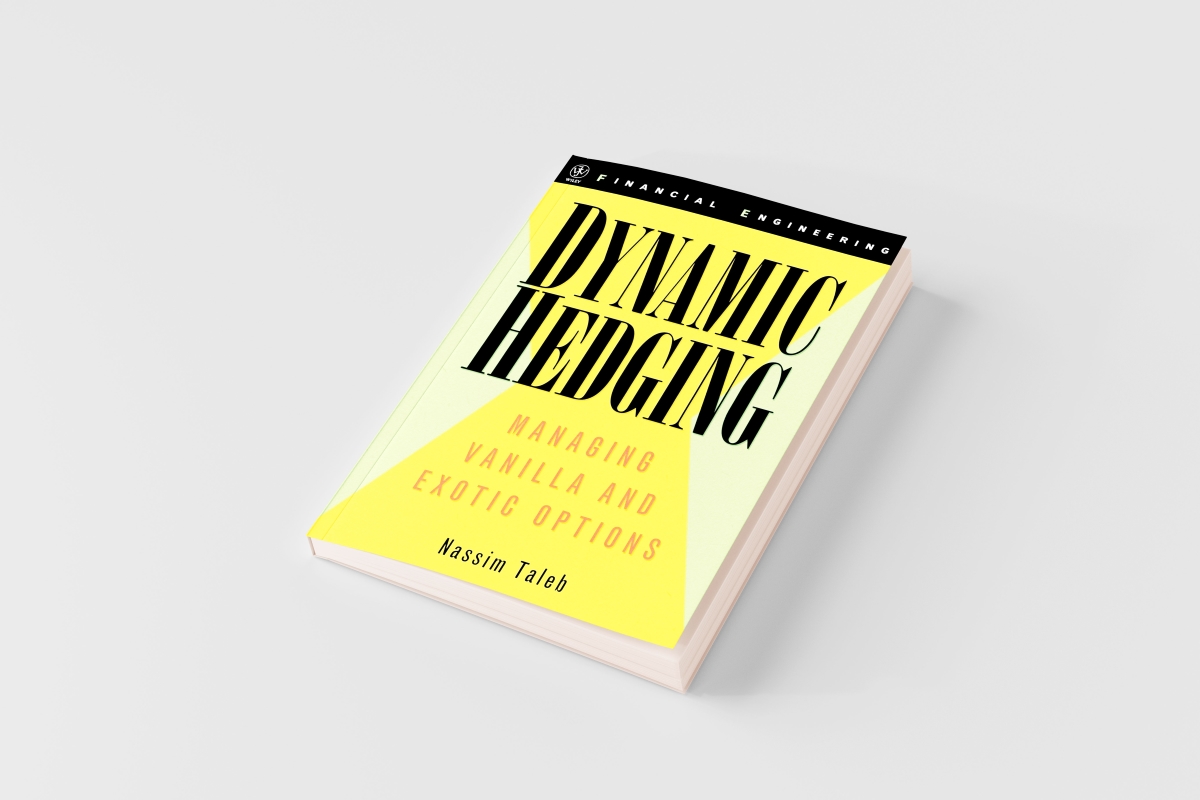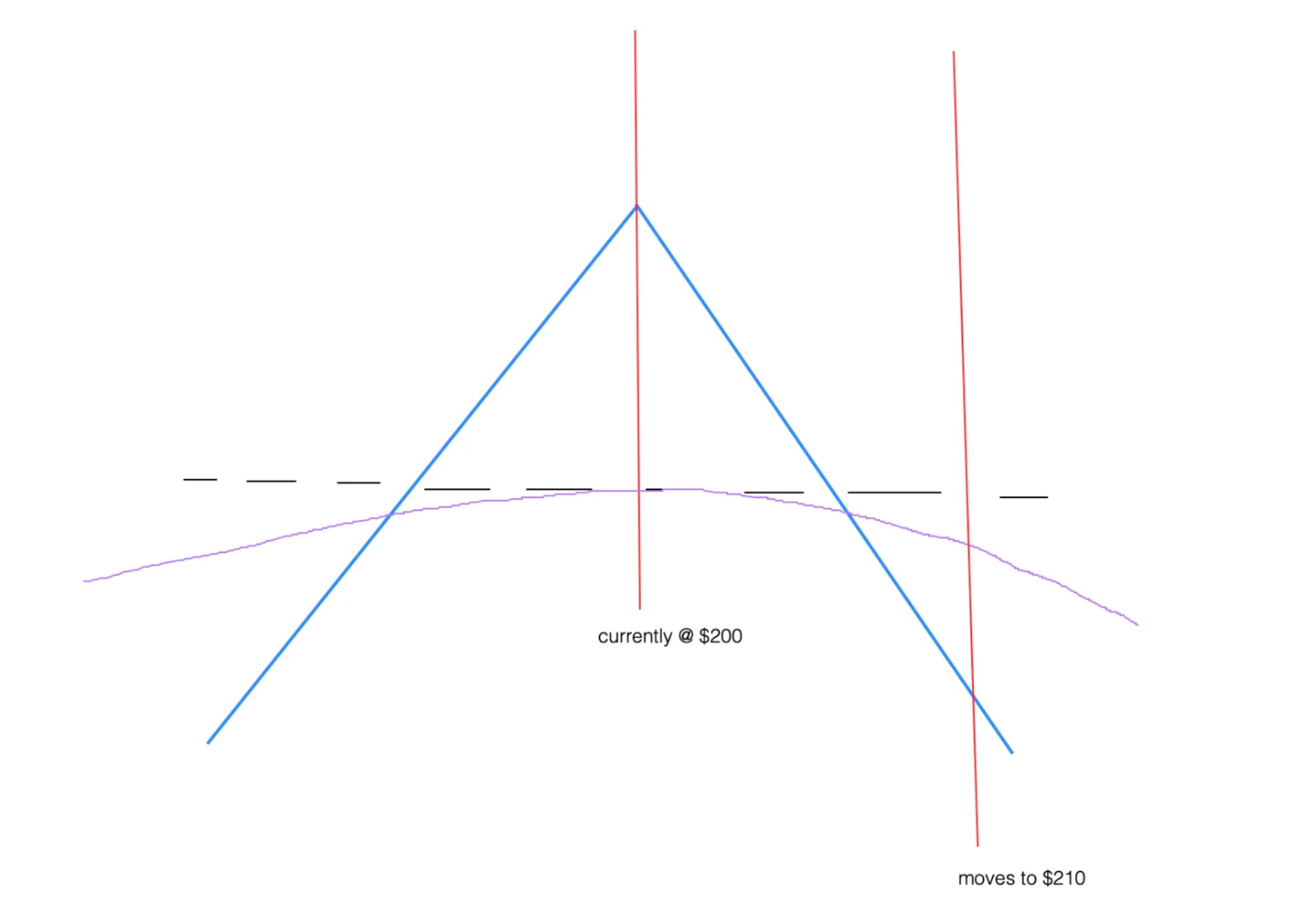

Finance
What Is Cross Hedging
Published: January 15, 2024
Learn how cross hedging can help manage financial risks in the world of finance. Discover the benefits and strategies behind this effective risk management technique.
(Many of the links in this article redirect to a specific reviewed product. Your purchase of these products through affiliate links helps to generate commission for LiveWell, at no extra cost. Learn more)
Table of Contents
Introduction
In the world of finance, managing risks is of utmost importance. One strategy used by investors and businesses to mitigate the impact of price fluctuations is hedging. Hedging involves taking on an opposite position to an existing or expected financial commitment to reduce potential losses. While there are various types of hedging techniques, one that is commonly used is cross hedging.
Cross hedging is a method of hedging where an asset is used to offset the risks associated with a different, but related, asset. This technique is particularly useful when there is a strong correlation between the two assets, meaning that changes in the value of one asset are likely to have a similar effect on the other.
By employing cross hedging, investors can protect themselves against adverse price movements in one asset class by taking positions in another correlated asset class. This strategy allows them to reduce their exposure to risks without completely eliminating them.
In this article, we will explore the concept of cross hedging in more detail and discuss its purpose, as well as provide examples to illustrate how it works in practice. We will also examine the benefits and risks associated with cross hedging, and outline the key factors that investors should consider when implementing this strategy.
Definition of Cross Hedging
Cross hedging is a hedging technique that involves using a financial instrument to offset the risks associated with another related but distinct financial instrument. It is employed when the desired instrument for hedging is not available or suitable, but there is a high correlation between the two instruments.
Unlike direct hedging, where the hedging instrument perfectly matches the underlying exposure, cross hedging involves using a different instrument with a similar price movement as the underlying asset that needs to be hedged. The correlation between the two instruments allows for a degree of risk reduction, even if they are not identical.
For example, let’s say a farmer has a significant amount of corn crops and wants to protect against a potential decrease in corn prices. However, the farmer may find that the corn futures contract, which would be an ideal hedge, is either unavailable or not practical to trade. In this case, the farmer might turn to soybean futures contracts as a cross hedge. Since corn and soybean prices are highly correlated, a change in soybean prices can serve as a good proxy for corn price movements.
In cross hedging, it is important to consider the strength of the correlation between the two instruments. The closer the correlation, the more effective the cross hedge will be. A high degree of correlation indicates that changes in the value of one instrument are likely to be mirrored in the other. However, it is worth noting that cross hedging is not a guarantee of a perfect hedge, as the correlation between the two instruments can fluctuate over time.
To effectively implement cross hedging, investors need to carefully analyze the historical relationship between the two instruments and assess the potential impact of changes in their respective prices. This analysis helps determine the appropriate ratio or proportion of the hedge instrument to use in order to achieve the desired level of risk reduction.
Purpose of Cross Hedging
The primary purpose of cross hedging is to manage the risks associated with a specific financial exposure when the ideal hedging instrument is not available or suitable. It allows investors to offset potential losses by taking positions in correlated assets, even if they are not an exact match. Here are some key purposes of cross hedging:
- Risk Mitigation: Cross hedging is used to reduce the impact of price fluctuations on a particular asset or portfolio. By taking a position in a correlated instrument, investors aim to offset losses in the original asset. This helps protect against adverse price movements and potential financial losses.
- Lack of Access: Sometimes, the desired hedging instrument may not be readily accessible due to various reasons, such as liquidity constraints or regulatory restrictions. In such cases, cross hedging provides an alternative means to hedge against risk using available and correlated instruments.
- Cost Efficiency: Cross hedging can be a cost-effective strategy compared to direct hedging when the ideal hedging instrument is expensive or involves high transaction costs. By using a different but correlated instrument, investors can achieve risk reduction at a lower cost.
- Portfolio Diversification: Cross hedging allows investors to diversify their portfolio by taking positions in different but related assets. This helps to spread risks across multiple investments and mitigate the impact of adverse events on the overall portfolio.
It is worth noting that cross hedging is not limited to individual investors or businesses. Financial institutions, commodity producers, and traders also employ this strategy to manage risks associated with their exposures.
In summary, the purpose of cross hedging is to minimize risk and protect against potential losses when the desired hedging instrument is not viable. It provides an alternative means to hedge by utilizing correlated assets, helping investors to effectively manage risks while considering factors such as cost efficiency and portfolio diversification.
Examples of Cross Hedging
To better illustrate the concept of cross hedging, let’s explore a few examples:
- Foreign Exchange (FX) Cross Hedging: Suppose a company is based in the United States but has significant revenue and expenses in euros. To hedge against potential exchange rate fluctuations between the U.S. dollar and the euro, the company might choose to cross hedge by using a currency pair that has a high correlation with the euro, such as the euro/British pound (EUR/GBP) pair. By taking a position in the EUR/GBP futures contract, the company can offset its euro-related exchange rate risks, even though it is not a direct hedge.
- Commodity Cross Hedging: Let’s consider the example of an airline company that wants to hedge against the price risk of jet fuel. Due to the limited availability or high costs associated with jet fuel futures contracts, the airline might choose to cross hedge using a correlated commodity, such as crude oil futures. Since there is a strong correlation between jet fuel and crude oil prices, changes in crude oil prices can provide a reasonable hedge for their jet fuel exposure, reducing the overall price risk.
- Stock Index Cross Hedging: Investors who hold a portfolio consisting of technology stocks may want to protect their positions against potential market downturns. If index futures contracts on technology stocks are not available, they may cross hedge by using index futures contracts on a correlated index, such as the Nasdaq Composite Index. While it is not a perfect hedge, the movements in the Nasdaq Composite Index can provide a reasonable proxy to offset the potential losses in their technology stock portfolio.
These examples highlight how cross hedging involves selecting a correlated asset or instrument to mitigate risks when the ideal hedging instrument is not available or practical. It demonstrates the flexibility and adaptability of cross hedging in managing different types of financial exposures.
It is important to note that the effectiveness of cross hedging depends on the strength of the correlation between the chosen instrument and the target exposure. Moreover, market conditions and the specific dynamics of the correlated assets can impact the efficiency of the cross hedge over time. Therefore, proper analysis and monitoring are crucial when implementing cross hedging strategies.
Benefits and Risks of Cross Hedging
Cross hedging offers several benefits, but it also comes with its own set of risks. Let’s explore both sides:
- Benefits of Cross Hedging:
- Risk Mitigation: Cross hedging allows investors to reduce the impact of price fluctuations on their exposure to a specific asset or portfolio. By taking positions in correlated instruments, they can offset potential losses and protect against adverse price movements.
- Flexibility: Cross hedging offers flexibility when the desired hedging instrument is not available or practical. It allows investors to utilize correlated assets, even if they are not an exact match, to achieve risk reduction and maintain their hedging objectives.
- Cost Efficiency: Cross hedging can be more cost-effective compared to direct hedging when the ideal hedging instrument involves high transaction costs or is not easily accessible. By using a different but highly correlated instrument, investors can achieve risk reduction at a lower cost.
- Diversification: Employing cross hedging strategies allows investors to diversify their portfolio by taking positions in related but distinct assets. This helps spread risks across multiple investments and reduces the vulnerability of the portfolio to single asset movements.
- Enhancing Returns: In some cases, cross hedging opportunities may present the potential for enhanced returns. If the correlated instrument used for hedging outperforms the original exposure, investors may benefit from additional gains.
- Risks of Cross Hedging:
- Imperfect Correlation: Cross hedging relies on the assumption of a strong correlation between the chosen instrument and the target exposure. However, correlations can change over time, leading to an imperfect hedge. It is important to monitor and reassess the correlation regularly to maintain effective risk mitigation.
- Basis Risk: Basis risk arises from the differences between the price movements of the original exposure and the chosen hedging instrument. Since the two instruments are not identical, there is a risk that their price movements may deviate, resulting in potential losses from basis risk.
- Market Volatility: Cross hedging involves exposure to multiple assets, each with its own volatility characteristics. Changes in market conditions and volatility levels can increase the overall risk of the hedging strategy, potentially resulting in unexpected losses.
- Liquidity Constraints: In some cases, the availability and liquidity of the chosen correlated instrument for cross hedging may be limited. This can make it challenging to execute trades at desired prices and volumes, potentially impacting the effectiveness of the hedge.
- Execution Risk: Successfully implementing a cross hedging strategy requires careful analysis and timing. Misjudgments in timing, pricing, or execution may result in suboptimal hedging outcomes, potentially leading to losses.
It is important for investors to carefully consider the benefits and risks associated with cross hedging and make informed decisions based on their specific requirements, market conditions, and available hedging options.
Factors to Consider in Cross Hedging
When implementing a cross hedging strategy, there are several important factors that investors should consider. These factors can greatly impact the effectiveness and success of the hedge. Let’s explore them:
- Correlation Analysis: Understanding the historical relationship between the chosen instrument and the target exposure is crucial. Investors should analyze the correlation and assess its strength and stability over time. Strong and stable correlations increase the likelihood of an effective cross hedge.
- Instrument Selection: Carefully selecting the appropriate correlated instrument is essential. Consider factors such as liquidity, trading costs, and the available derivatives market. The chosen instrument should have a high correlation and be easily tradable.
- Hedge Ratio Determination: Establishing the appropriate hedge ratio is vital to achieve the desired balance between risk reduction and cost efficiency. It involves determining the optimal proportion of the correlated instrument to use relative to the target exposure. Historical analysis and quantitative models can assist in determining the most effective hedge ratio.
- Basis Risk Management: Basis risk, resulting from differences in price movements between the target exposure and the chosen hedge instrument, should be carefully managed. Monitoring and adjusting the hedge position as market conditions change can help mitigate basis risk and ensure the hedge remains effective.
- Monitoring and Review: Regular monitoring of the cross hedge is essential to ensure its ongoing effectiveness. Changes in market conditions, correlations, or the availability of hedging instruments should prompt a reassessment of the hedge strategy. Periodic review and adjustments are necessary to maintain optimal risk reduction.
- Risk Tolerance: Assessing risk tolerance is critical when determining the intensity and level of cross hedging. Invoking a cross hedge involves an additional layer of risk, including basis risk and potential losses if the correlation weakens or the strategy does not perform as expected. Investors must be comfortable with the risk they are undertaking.
- Regulatory and Legal Considerations: Understanding the regulatory and legal implications of cross hedging is important. Different jurisdictions may have varying rules and restrictions on cross hedging. Compliance with relevant laws and regulations is essential to avoid any legal consequences.
It is important to note that cross hedging involves complex analysis and decision-making. Professional advice from financial experts with expertise in hedging strategies can provide valuable guidance and help investors navigate the complexities of cross hedging.
By considering these factors, investors can assess the feasibility and effectiveness of cross hedging and make informed decisions to manage risks associated with their financial exposures.
Conclusion
Cross hedging is a valuable technique in the field of finance that allows investors to manage risks associated with specific financial exposures when the ideal hedging instrument is not available or practical. By using correlated assets or instruments, cross hedging provides a means to reduce potential losses and mitigate the impact of price fluctuations.
We have explored the definition of cross hedging and its purpose, highlighting how this strategy helps investors achieve risk reduction and protect against adverse price movements. Through various examples, we have seen how cross hedging can be applied in different scenarios, such as foreign exchange, commodity, and stock index cross hedging.
While cross hedging offers benefits like risk mitigation, flexibility, cost efficiency, and diversification, it is important to be aware of the potential risks involved. Imperfect correlation, basis risk, market volatility, liquidity constraints, and execution risk are some of the risks that should be carefully considered and managed when implementing cross hedging strategies.
Factors such as correlation analysis, instrument selection, hedge ratio determination, basis risk management, monitoring and review, risk tolerance, and regulatory considerations play crucial roles in the success of a cross hedging strategy. Careful analysis, ongoing monitoring, and adjustment are necessary to adapt to changing market conditions and ensure the effectiveness of the hedge.
In conclusion, cross hedging provides a valuable tool for investors to manage risks when the ideal hedging instrument is not available. By understanding the correlation between different assets and employing the appropriate cross hedging strategies, investors can reduce their exposure to risk and protect their portfolios against adverse market movements.
However, it is essential to recognize that cross hedging is not without its challenges and requires careful analysis and decision-making. Seeking guidance from financial experts can be beneficial in implementing cross hedging strategies effectively and optimizing risk management.














